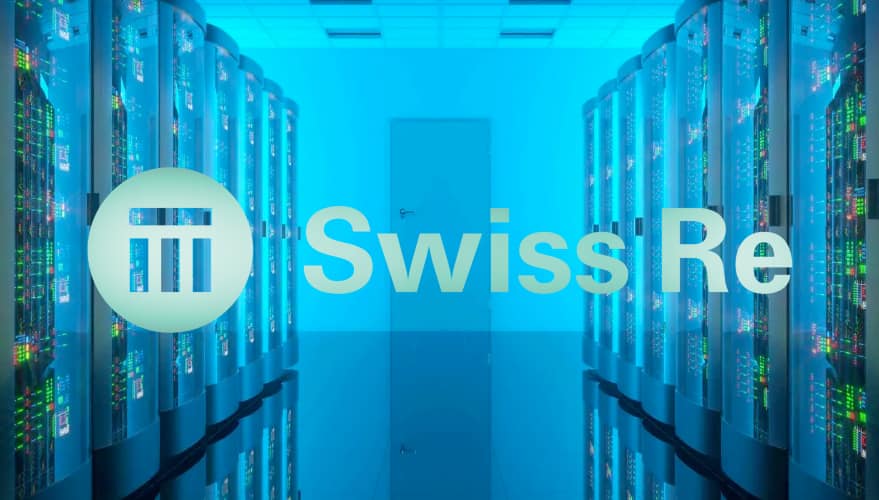Swiss Re calls for different approach on cyber, cites need for cyber ILS

Global reinsurance giant Swiss Re has said this morning that the industry needs to adopt a different approach to cyber risk underwriting, while also repeating its call for the development of a cyber insurance-linked securities (ILS) marketplace.
Swiss Re said that cyber risk models remain in their infancy today and makes clear that it feels modelling is holding back the ability of underwriters on cyber insurance and reinsurance, leading to a market that, so far, isn’t functioning as well as it could.
With the cyber risk and threat landscape rapidly evolving, Swiss Re believes this inability to quantify exposures accurately is a hindrance to the further development of the cyber insurance market and is a key factor holding back capacity from entering the sector as well.
Jérôme Haegeli, Swiss Re Group Chief Economist, explained, “As cyberattacks have increased, so has awareness of the risk – and with it, demand for cyber insurance is growing. However, due to the high degree of uncertainty regarding expected losses and the evolving nature of the risk, its insurability is limited. This in turn restrains market capacity, leading to a protection gap of around 90%.”
Which, of course, also means a significant opportunity for the insurance and reinsurance industry, if that protection gap can be narrowed, by evolving the cyber insurance product into something that capital is attracted to, so new capacity can enter the space and support this market’s growth.
According to Swiss Re, the three areas of key focus, to enhance the insurability of cyber risks, are: increasing contract consistency and clarity; using standardised data and better modelling; and identifying new sources of capital.
Enhancing cyber resilience is part of this, to help organisations and people better manage and mitigate the risks on their own, while enabling insurers and reinsurers to take one risk they can quantify, resulting in a more healthy marketplace.
John Coletti, Head Cyber Reinsurance at Swiss Re, said, “The cyber insurance market has tremendous growth potential. However, the market needs to mature further to ensure enough insurance protection is available. Our industry has a key role to play by addressing three issues: improving data and modelling, increasing contract consistency and clarity and identifying new sources of capital.”
Global cyber insurance premiums were around US $10 billion in 2021, while Swiss Re Institute forecasts 20% annual growth to 2025, with total premiums rising to US $23 billion by that time.
However, this is still a small market compared to its potential, as estimates of annual global cyber losses are as high as US $945 billion, which suggests that roughly 90% of the risk remains uninsured.
This is due to insurability limitations, because of the potential for catastrophic but not well-understood events to occur, the concerns over accumulation risk, the lack of robust modelling and insufficient data being available.
Meanwhile, limited insurability also constrains capacity, so constraining cyber insurance market potential, Swiss Re said.
The reinsurance firm calls for standardised cyber data and modelling, updates to policy language for clarity and consistency, and the need to identify new sources of cyber underwriting capacity.
This is where insurance-linked securities (ILS) come in, as Swiss Re notes that tapping the ILS market is one way to bring in additional capacity for cyber risks, although notes that the above market developments are likely to be needed before any meaningful influx of ILS capital will be seen.
“Coordinated industry efforts to standardise data and policy languages. Improved modeling capacity (both scenario-driven and data analytics-based) and upgraded cyber skills would help address quantification shortcomings,” the reinsurer explained.
Adding that, “Altogether, this would help reduce uncertainty, lay the foundation to attract new sources of capital and thereby activate a market for cyber insurance-linked securities (ILS).”
Part of this is developing the cyber risk insurance market so that there is a greater level of clarity around what constitutes a cyber catastrophe event, which could help to provide greater confidence to capital.
“There is latent interest in growing alternative capital solutions for cyber risks to support a sustainable cyber market. To date, however, ILS investor interest has been limited, with aggregation risk and model uncertainty acting as main deterrents,” Swiss Re notes.
The reinsurer also explains that basis risk related to triggers could be an issue for a developing cyber ILS marketplace, but that some progress is being seen and ILS managers are certainly gaining interest in the line of business.
In addition, the reinsurer notes that positive developments are being seen, such as with the recent launch of the first cyber sidecar structure, in Coalition’s Ferian Re vehicle.
In September, Swiss Re’s CUO said that the reinsurer is working on ways to develop cyber risk transfer options that could be transferred to ILS investors.
The calls echo those from another major reinsurer, Munich Re, who has repeatedly said that the ILS market is needed to support the growth of cyber market capacity.
Just recently, Claudia Hasse of Munich Re said that making cyber war exclusions clear, as part of enhancing the terms and conditions around cyber insurance and reinsurance coverage, could help to create capital market confidence in cyber underwriting and help develop a cyber ILS market.
Read all of our coverage on the development of a cyber insurance-linked securities (ILS) market here.





